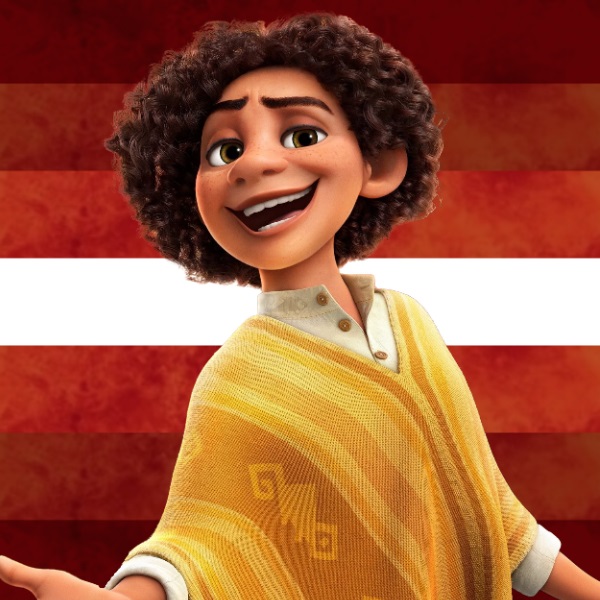Anime Cartoons

Anime, or animation in Japanese, is a popular form of two-dimensional illustrated visual art. The stories in this genre are satirical, but they have themes that are both age-appropriate and appealing to children. This article will explain the different types of animation and why they appeal to children. In addition, we will discuss how this medium has different values than regular movies. In addition, we will discuss the difference between anime and cartoons.
Anime is a form of two-dimensional illustrated visual art
Anime is a type of picture animation that originated in Japan. It is considered to be more technical and closer to reality than cartoons, which originated in the US. Animes can be categorized by the characters’ physical appearance and have a storyline. They are usually animated and have multiple episodes. A typical anime episode can last for between five and twenty minutes.
Anime cartoons are a form Japanese animation. They typically feature vibrant colors, action-packed plots, and futuristic themes. They are a form of two-dimensional visual art and can educate children and adults alike about a wide variety of topics. Many people are also fascinated by anime and manga, and it’s a great form of entertainment for children. In addition to educating them about different topics, anime can also be a great friend when you’re feeling down or bored.
It is satirical
Satire is a type of humorous commentary on reality. Cartoons are particularly susceptible to satire because they tend to blur the line between reality and idealism. In other words, cartoons can be more esoteric than other forms of media, and the humour they provide can be very funny. However, satire can also be offensive. Cartoons are often considered to be more appropriate than other forms of media, because they aren’t considered to be real.
Some examples of satire in anime include South Park’s “Chinpokomon” episode, Adult Swim’s Perfect Hair Forever, Nickelodeon’s Kappa Mikey, and Japanese-language animations like KonoSuba. Despite the satire, there’s still plenty of entertainment value in these cartoons. These works are a great way to unwind with a good movie.
It has adult themes
You may be wondering if it’s really possible to find adult themes in anime cartoons. While many people associate adult themes with cartoon pornography, there are some serious examples of adult-themed anime. The student council president is an excellent example of an anime series with adult themes. In addition to its terrific plot and beautiful animation, BoJack Horseman is a highly popular television show that tackles various adult themes.
While children are attracted to these types of shows, adults often gravitate towards live-action entertainment. In Japan, however, anime is made for a wide range of ages and even includes popular older characters that appeal to an older audience. Adult-themed anime, on the other hand, may contain pornography, serious drama, and other adult themes. This is especially true of animated cartoons for children. It is important to recognize the difference.
It is marketed toward kids
Japanese animation, or anime, is a style of video games and animation that is marketed to kids and their parents. There are many categories of anime, including Doraemon, One Piece, Naruto, Aikatsu!, Pokemon, Yokai Watch, and Naruto: a list of the top 20 anime series in Japan. Most of these shows are aimed at a young audience, but there are some that are also suitable for adults. They can even contain adult themes such as serious drama and pornography.
The subject matter of anime is varied, though most of it is meant to induce laughter. However, some cartoons are educational and are designed for children. Cartoons marketed for kids may be hard to understand for non-Japanese audiences. Many popular kodomo manga are adapted into anime and accompanying merchandise. In 1981, the Shogakukan Manga Award introduced a category for children’s manga, which is similar to American popular media.
It has cliches
Cliches are common in our daily language. They’re often the result of overuse. They are also often associated with popular cultural movements or ideas. The word itself originates in French and means “to mold.” In printing houses, it was used to describe stereotypes. This word first appeared in English in 1839 and became popular after World War II, when newsprint was in short supply. Over time, it has become a verb or adjective for anything that is overused.
While we’ve become accustomed to cliches in speech and writing, we often ignore them. However, there’s a good reason for using them: they work well. Cliches, in particular, tend to involve an attractive young girl in distress, a strong and handsome man, or a ‘boy from the other side of the tracks’. And, they can make you appear lazy or unimaginative.
It has characters
While many Western animation heroes are represented by dummies, anime characters are more realistic and have more symbolism than their counterparts. While Western characters tend to be more cartoonish and more stereotypical, anime characters are often more real and relatable than their counterparts. In addition to the various types of characters, anime is more varied in terms of genre than Western cartoons. It has characters in anime cartoons that are reminiscent of real life, as well as some that are completely unlike those of the West.
Anime is a type of animation that originated in Japan. Many of the shows are targeted at kids, but some have mature themes that can appeal to adults. Unlike Western cartoons, which usually feature a cartoon for kids, anime is family-friendly. The term anime was coined by American film director Noel Burch in 1973 to describe the style of Japanese film animation. While the majority of anime cartoons are meant for children, some contain mature themes, serious drama, or pornography.